
|
|
| Also see the Story of Thomas Ward Custer and Rebecca Minerd - Their Son Thomas C. Custer - "Tontogany's Deep Secret" - the Custer Family Album - and Our "2002 Custer Connection" National Family Reunion |
When first becoming aware of our Minerd-Miner family's connection with General Custer's brother Tom, I was deeply moved by the fact that the general was not the only Custer to die at Little Bighorn. In fact four of his immediate relatives – two brothers, a brother in law and a nephew – also gave their lives on the field that fateful afternoon. It should have been an American tragedy for all time. Instead, at best, the story has been treated in American popular culture as a mere footnote.
The Custer disaster at Little Bighorn mirrors the epic story of the five Sullivan brothers whose dramatic tale is much better known. The siblings – George, Frank, Joe, Matt and Al – all perished together after their U.S. Navy cruiser, the Juneau, when torpedoed at Guadalcanal during World War II. Their saga was trumpeted nationwide in news stories and wire photos and even became a 1944 Hollywood film, The Fighting Sullivans, starring Anne Baxter and Thomas Mitchell. It led the U.S. War Department to bolster its rules about separating siblings in military service, known as the "Sole Survivor Policy." And the policy was central to Steven Spielberg's 1998 blockbuster film Saving Private Ryan, starring Tom Hanks, Matt Damon and Tom Sizemore.
Beyond his death at the Bighorn, Thomas Ward "Tom" Custer, younger brother of General George Armstrong Custer, made his mark on Americana in many ways – as a Civil War hero who won two Medals of Honor; as a brother-in-law who charmed the general's wife Elizabeth "Libbie" (Bacon) Custer; and as a fighter for the U.S. Seventh Cavalry on the Great Plains during the Sioux Wars.
In death, Tom has not been ignored in American popular culture, but his presence has been more speckled and uneven. He just never has received his "big break" into the limelight until the dawn of the 21st century, and even then, the effect has been limited.
Tom could have been a posthumous folk hero. Perhaps the best known legends about him, which could have become larger story lines, are his feud with Chief Rain in the Face, who vowed to cut out and eat Tom's heart; the run-ins with lawman/gunfighter Wild Bill Hickok in Kansas; and his well-earned reputation as a heavy drinker and womanizer, including a sexual relationship with my own cousin, Rebecca Minerd.
In the most famous Custer film of all – They Died with Their Boots On, starring Errol Flynn and Olivia de Havilland – Tom’s persona is noticeably absent. The film reportedly was Warner Bros.' second biggest hit of 1941 and has inspired many to become interested in the Custer story. Despite intimate scenes where the general made important decisions, settled barroom brawls and planned for battle, where Tom could have played a meaningful big screen role, he was not written into the script.
Any legend typically has a core of truth which has staying power as it takes on new meanings and twists over time. A legend often requires that others, perhaps motivated to exploit the story to make money, add their own interpretation and shadows. All of these factor into Tom's legacy. Some of what we know today bears little resemblance to actual facts, but the paper archaeology tracing the development and continuance of Tom-related stories in our culture's mass media is fascinating and enhances our understanding.
It was not until 2002 – some 126 years after the Bighorn battle – that Tom's story was featured in not one but two full-length biographies. One was authored by Carl Day, Tom Custer: Ride to Glory. Roy Bird also published a lesser known biography about the same time, In His Brother's Shadow, later re-issued under the title The Better Brother: Tom & George Custer and the Battle for the American West.
This article is a survey of the photographs, news and magazine articles, books, stage plays, and television and movie films which have influenced Americans' limited perceptions of Tom up through the year 2002. Material published after 2002 is not part of this study.
|
~ Photograph Portraits ~ |
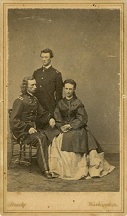
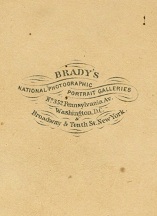
|
|
Perhaps the most well-known photograph image of Tom, a carte de visite size portrait with his famous brother George and beautiful sister-in-law Elizabeth "Libbie" (Bacon) Custer. Taken on Jan. 3, 1865 at Brady's National Photographic Portrait Galleries at 352 Pennsylvania Avenue in Washington, DC. Numbered K-49 in the standard reference book Custer in Photographs by D. Mark Katz. |
|
|
|
|
|
|||
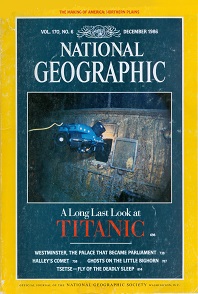 
|
|||
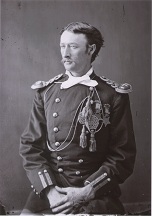
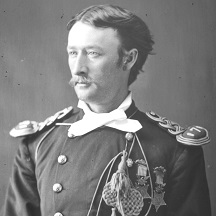
|
|||
|
Famous studio portrait showing Tom wearing his two Medals of Honor. Original photographer unknown. This image was printed by D.F. Barry in Bismarck, Standing Rock, Dakota Territory and marketed for sale in the 1880s as a cabinet-size format, size 4¼ x 6½ inches. Variations of the photograph have been published in many books and news articles since then. An original sold for $2,180 on eBay in January 2015. Image courtesy of the Denver Public Library. |
|||
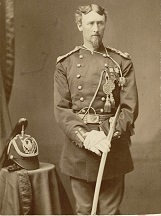 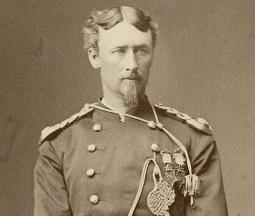 |
|||
Photograph by J.F. Coonley, entitled "Thomas W. Custer in Full Military Dress with a Saber," circa 1872. Courtesy National Park Service, Little Bighorn Battlefield National Monument. |
|||
 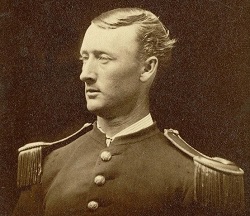 |
|||
| Thomas Ward Custer. National Park Service | |||


|
|||
|
Auctions -- This extremely rare portrait shows the Civil War saber-wound scar on Tom's right cheek. It is from the Dr. Lawrence Frost Collection, courtesy of W. Donald Horn Sr. In December 2004, the Swann Galleries auctioned an original carte de visite version for $1,955, as part of a collection of important 19th and 20th century photographs. The CDV was described in the catalogue as an albumen print measuring 3.75 inches by 2.25 inches. |
|||
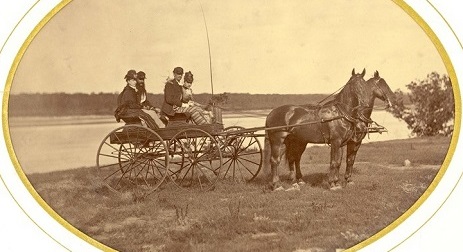 |
|||
| Tom Custer, W.W. Cooke and the Wadsworth Girls. National Park Service | |||
 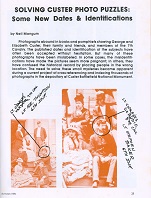 |
|||
| Tom appears in and is dentified in 6 group photographs in the Autumn 1981 edition of Montana - The Magazine of Western History, in an article entitled "Solving Custer Photo Puzzles." Minerd.com Archives | |||
| ~ Medals of Honor in the Civil War ~ | |||
|
|
|||

|
|||

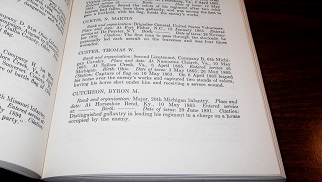
|
|||
|
Medal of Honor Recipients: 1863-1973, dated Oct. 22, 1973 and published by the Committee on Veterans' Affairs of the United States Senate, includes a short profile of Tom on page 69. |
|||
|
~ Contemporary Newspaper Accounts
of the Sioux War and Little Big Horn Battle~ |
|||
 |
|||
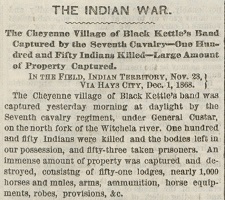 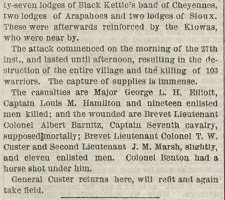 |
|||
New York Herald, Dec. 2, 1868, headlined "The Indian War. The Cheyenne Village of Black Kettle's Band Captured by the Seventh Cavalry -- One Hundred and Fifty Indians Killed -- Large Amount of Property Captured." |
|||
|
|
|||
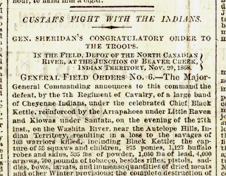

|
|||
|
New York Tribune article dated Dec. 7, 1868, describing the Battle of the Washita near present-day Cheyenne, OK, and mentioning Tom and his slight wound received in the fight. |
|||
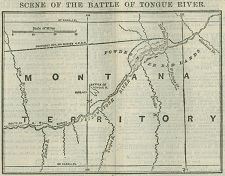
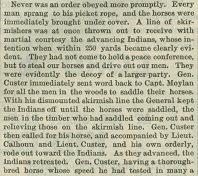
|
|||
|
New York Tribune coverage of the Battle of Tongue River, dated Sept. 8, 1873, including a map of the battle and mentioning Tom and his brother riding out to meet with a skirmish line of Indians, who scattered as the party approached. Their mission was to protect Northern Pacific Railroad surveyors working in the region. |
|||

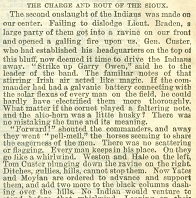
|
|||
|
Continuing coverage of the Battle of Tongue River, a.k.a. Battle of the Big Horn, New York Tribune, Sept. 9, 1873. The article mentions Tom among cavalrymen on an aggressive assault: "'Forward!' shouted the commanders, and away then went 'pell-mell,' the horses seeming to share the eagerness of the men. There was no scattering or flagging. Every man keeps in his place. On they go like a whirlwind. Weston and hale on the left, Tom Custer plunging down the ravine on the right. Ditches, gullies, hills, cannot stop them.... Lieut. Custer on the left led his men on furiously. 'He is a terrible rider,' said one of our 'casuals' to me. 'I saw him fly over a ditch about 15 feet wide. The man after him missed it, and horse and rider rolled into the gully." |
|||
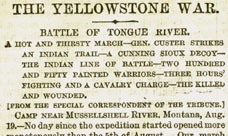
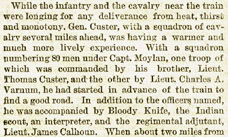
|
|||
|
Tom, the general and their brother-in-law James Calhoun named in a New York Tribune article ( Sept. 12, 1873) about the Yellowstone War at Battle of Honsinger Bluff on the Tongue River, Montana. |
|||
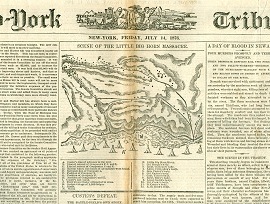
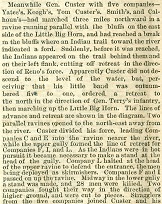
|
|||
Front page coverage in the New York Tribune, July 14, 1876, including a map of the battlefield with numbers showing where the bodies of Tom and his brothers were found. |
|||

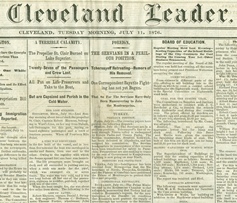
|
|||
|
The Cleveland Leader, one of Ohio's largest newspapers, printed details of the Little Big Horn carnage a week afterward, saying that General Custer's body "was untouched -- a tribute of respect from such an enemy more real than a title of nobility. He lay as if asleep, his face calm and a smile on his lips. Near him were eleven dead officers. Captain Miles Keough was on his right, and his brother, Captain Thomas Custer, on his left Almost at Custer's feet lay a fair, beautiful boy of nineteen. This was young Reed, Custer's nephew." |
|||
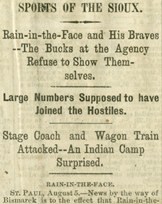
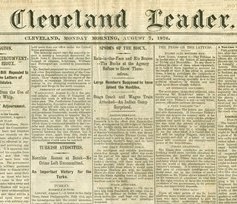
|
|||
|
The Cleveland Leader reported slightly more than a month after Little Big Horn that Rain-in-the-Face and 220 lodges of Native Americans had arrived at Standing Rock, ND, having "cut the heart from Captain [Thomas] Custer's body, and to have fired the last shot at General Custer." (Aug. 7, 1876) |
|||
 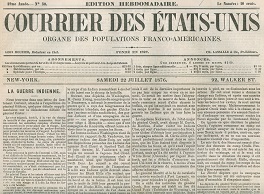
|
|||
Courrier Des États-Unis, a French-American newspaper published in New York and dated July 22, 1876, names Tom in the 2nd paragraph of this top headline story, "La Guerre Indienne." The sentence reading "Le corps du général n'a été nullement mutilé, mais celui de son frère, Tom Custer, a été ouvert, et le coeuer été arraché" ... translates into English as "The general's body was not mutilated at all, but his brother, Tom Custer, was cut open and his heart torn out." |
|||
| ~ Posthumous News and Magazine Articles ~ | |||
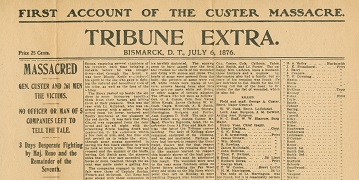
|
|||
|
Modern reprint of the "extra" edition of the Bismarck Tribune, Dakota Territory, published 10 days after the battle on July 6, 1876, priced at 25 cents and branded as the "first account of the Custer Massacre." Tom is not mentioned in the narrative among the officer casualties, and is named 18th in a list of "Killed." In the last paragraph is this underplayed sentence: "The unhappy Mrs. Calhoun loses a husband, three brothers and a nephew." |
|||
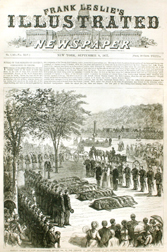
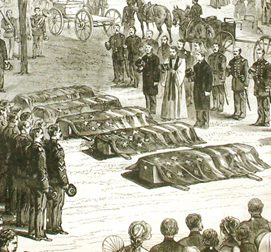
|
|||
|
Funeral and burial service for Tom and his brother in law, James Calhoun, at Fort Leavenworth, Kansas, on Aug. 4, 1877, as published on the front page of Frank Leslie's Illustrated Newspaper, Sept. 8, 1877. |
|||
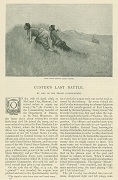

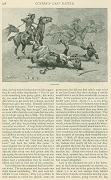
|
|||
|
The Century Magazine published an 1892 article by E.S. Godfrey, Captain of the 7th Cavalry, picturing Tom and headlined "Custer's Last Battle." |
|||
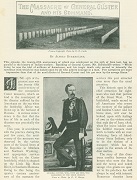
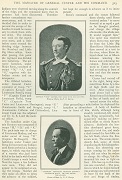
|
|||
|
Wide World Magazine's article picturing Tom, headlined "The Massacre of General Custer and His Command," by Alfred Burkholder, 1901. Synopsis: on its 25th anniversary, a description of the battle which "has no parallel in the history of Indian warfare.... While living he was the idol of millions of Americans, and his tragic death only served to intensify the reverence with which he was looked upon by all who admire courage in a man. Few narratives are more impressive than that of the annihilation of General Custer and his 300 men by the savage Sioux." |
|||
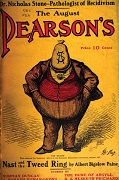
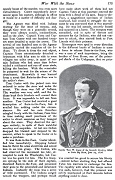
|
|||
|
August 1904 edition of Pearson's Magazine, containing the three-part article, "War with the Sioux," by Cyrus Townsend Brady, with Tom's photo. Images courtesy of Google Books. |
|||
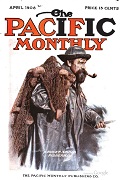
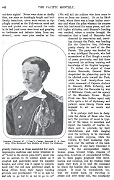
|
|||
|
The Pacific Monthly's April 1908 article, with Tom's portrait, entitled "A Purposeful Picnic," part II, by Fred A. Hunt. (The Pacific Monthly Publishing Co.). Images courtesy of Google Books. |
|||
| ~ Libbie Custer's Memoirs ~ | |||
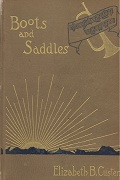

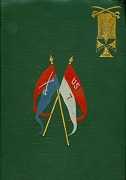
|
|||
|
Tom is widely
and well-mentioned in three major memoirs published by the general's
widow, Elizabeth "Libby" (Bacon) Custer. Left to right: Boots and Saddles: Or Life in Dakota with
General Custer (New York: Harper & Brothers, 1885), Following
the Guidon (New York: Harper & Brothers, 1890) and Tenting on
the Plains: Or, General Custer in Kansas and Texas (New York: Harper
& Brothers, 1895). In the years after Little Big Horn, Libbie published and lobbied diligently to preserve the memory of her dead hero-husband. She aggressively fought a propaganda war with journalists and authors who published material critical of the general. Shirley Leckie, in Elizabeth Bacon Custer and the Making of a Myth, wrote, “Her perception of who her husband was and what his life and death meant shaped and colored public opinion until she died.” Libbie adored her brother in law, despite his many flaws of character, and often referred to him as "Our Tom." She once wrote that he “honored and liked women extremely.” In Boots and Saddles, she knowingly wrote: Colonel Tom used to pay visits of an unconscionable length to ladies of the garrison, and no amount of teasing on his brother's part would induce him to shorten them. [Tom] never knew, when he started to go home from these visits, but that he would find on the young lady’s door-mat his trunk, portmanteau, and satchel – this as a little hint from the general that he was overtaxing the lady’s patience. |
|||
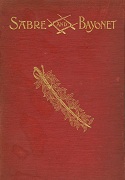
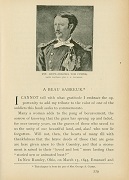
|
|||
|
Above: Libbie authored a special chapter about Tom entitled "A Beau Sebreur" in the book Sabre and Bayonet, compiled by Theo. F. Rodenbough (New York: G.W. Dillingham Co., 1897). |
|||
| ~ The First Biography Published After Little Big Horn ~ | |||
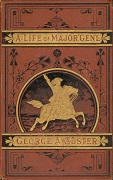 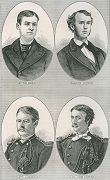 |
|||
Above: A Complete Life of Gen. George A. Custer. Major-General of Volunteers, Brevet Major-General U.S. Army, and Lieutenant Colonel Seventh U.S. Cavalry – by Frederick Whittaker, the first biography of Custer, published three months after the battle. The book is said to have helped stir up public controversy over the possible dereliction of duty by Reno and Benteen. Tom, his brother-in-law Calhoun, brother Boston and nephew Reed are pictured one page of oval sketches. Why this collage failed to inspire generations of poets, painters, authors, playwrights, songwriters and movie-makers, about a mother’s worst fears realized, is astonishing. |
|||
| ~ Feud with Chief Rain in the Face ~ | |||
|
|
|||
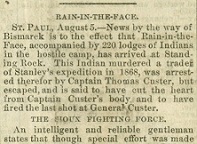
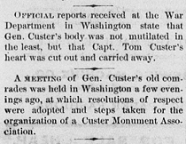
|
|||
|
After the Little Big Horn battle, the predominant rumor circulating in America was that Rain in the Face had gained revenge and cut out Tom's heart as part of the ritual mutilation of the body, and also fired the final shot into the general. This was widely reported in Eastern newspapers in the weeks following the massacre, citing "official reports received at the War Department in Washington," including publication in Ohio by, among others, the Cleveland Leader (left) and Perrysburg Journal in home region of Tom and his parents in Wood County. |
|||

|
|||
|
The nationally renowned poet Henry Wadsworth Longfellow (above, right) cemented the myth of Tom's dis-embowelment with his poem, "The Revenge of Rain in the Face," written almost immediately after the battle. Yet, surprisingly, Tom is not named. While the 1876 work is sympathetic to the Indian cause, Longfellow took significant creative license by stating that the general, not Tom, was whose heart was cut out. First known publication was in The Youth's Companion on March 1, 1877 (above, page 68), with wide reprinting in a variety of journals. It later was included in the anthology pictured below, The Poetical Works of Henry Wadsworth Longfellow (Household Edition, Boston: Houghton, Mifflin and Co., 1886). |
|||

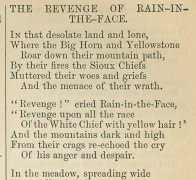
|
|||
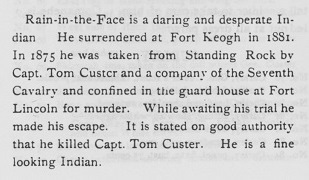
|
|||
|
Banking on the lingering popularity of the feud between Tom and Rain in the Face, photographer D.F. Barry kept the story in public view as part of American lore to help sell his pictures. After Rain surrendered at Fort Keough in September 1880, Barry used that as an opportunity to become friends and make a series of photographic portraits. In his 18-page sales booklet, D.F. Barry's Catalogue of Noted Indian Chiefs, published in the 1880s in Bismarck, Barry wrote this in his description of the chief's photo: "It is stated on good authority that he killed Capt. Tom Custer. He is a fine looking Indian." Later, Barry relocated to West Superior, Wisconsin, and re-issued the catalogue from that location. A reprint is shown here. Thomas M. Heski's 1978 biography of Barry, The Little Shadow Catcher, contains eight photos of Rain but names Tom only once. The text states that among the natives, Rain was one of Barry's "closest friends." The two even had a portrait made together, reproduced in the book, and Barry later wrote that Rain was "the most loyal of all" his Indian friends." |
|||
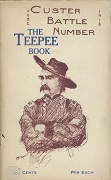


|
|||
|
The legend of Tom's Rain in the Face feud widely was retold on anniversaries of the battle. In June 1916, for the official 40th anniversary, a memorial service was held which featured remarks by Gen. E.S. Godfrey who delivered a personal message from Libbie Custer. As a commemoration, Herbert Coffeen of Sheridan, WY, published The Teepee Book, “Custer Battle Number,” with an article repeating the feud story, headlined “The Human Interest of the Custer Battle” by Raymond Richards. The Teepee Book was reprinted by The Mills Company (1926) in connection with the battle's golden anniversary, an event again involving Libbie's approval; and by Sol Lewis, New York, (1974) in two volumes. |
|||
 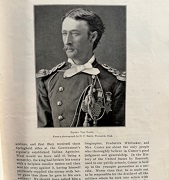
|
|||
|
Rain in the Face was pictured in the December 1896 edition of The Nickell Magazine, with the article including the portait of Tom. The story is said to have been disliked by the Custer faithful because it told the chief's side of the story. Courtesy Steve Custer. |
|||
|
Journalist D.W. Bronson penned an article, "The Story of the Little Big Horn," in Overland Monthly, January 1907. His piece states that after Rain in the Face cut away Tom's heart, he bit off a piece, spat it at someone, and then rode off waving the bloody organ. Author Charles A. Eastman, in his 1918 book Indian Heroes and Great Chieftains, who had interviewed Rain in the Face in July 1905, just a few months before the chief's death, quoted the warrior as saying: "Many lies have been told of me. Some say that I killed the Chief [General Custer], and others that I cut out the heart of his brother, because he had caused me to be imprisoned. Why, in that fight the excitement was so great that we scarcely recognized our nearest friends! Everything was done like lightning." |
|||
|
The American Mercury, a national intellectual journal edited by H.L. Mencken and published by Alfred A. Knopf, published an article in its November 1926 edition headlined "Custer and Rain in the Face," authored by Eli L. Huggins. The lengthy article focuses on the Indian warrior's hatred and distrust of the general and only mentions Tom once. |
|||
| ~ Iconic Battle Scenes ~ | |||
 |
|||
 |
|||
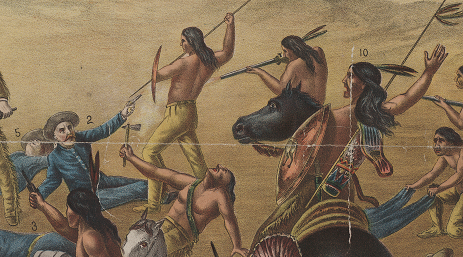 |
|||
In this 1886 lithograph print advertising Dr. M.A. Simmons' Liver Medicine, Tom is numbered "2" and pictured alongside his brother, seated while shooting toward overwhelming numbers of attackers. Their brother Boston and nephew Autie Reed also are depicted, but brother-in-law James C. Calhoun is not. Courtesy Library of Congress. (St. Louis & NY: A. Gast Bank-Note & Lith. Co., 1886). |
|||
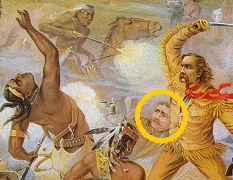 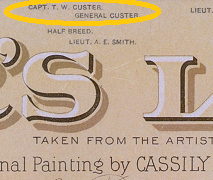 |
|||
"Custer's Last Fight" is perhaps the best known artistic depiction of the Little Big Horn battle as a widely distributed lithograph print of a painting by artist Cassilly Adams. In the scene, Tom is positioned at the general’s right breast, seated on the ground and firing a pistol, and their names appear side-by-side accordingly in the legend at the bottom of the print. Having originally been painted in the mid-1880s, Anheuser-Busch commissioned lithographer Otto Becker to produce a modified print for mass distribution to saloons across the United States to promote the company's beer. In the November 1946 article "Custer's Last Stand: John Mulvany, Cassilly Adams and Otto Becker," the Kansas History publication of the Kansas Historical Society said that " Copies can be viewed in barrooms, taverns, hotels, restaurants, and museums throughout the country. It is probably safe to say that in the 50 years elapsing since 1896 it has been viewed by a greater number of the lower-browed members of society -- and by fewer art critics -- than any other picture in American history.... When one considers that 150,000 copies have been published and distributed ... since the picture was first published in 1896, it is evident that "Custer's Last Fight" has been viewed by an almost countless throng." |
|||
|
|||
Above: "Custer's Last Stand" painting, 1899, by Edgar Samuel Paxson (1852-1919), oil on canvas. Copyright Jennings & Gusdorf, Butte, MT. The original hangs in the Buffalo Bill Center of the West in Cody, WY. Below: detail of Tom (left) and the General in the Paxson painting.Minerd.com Archives |
|||
 |
|||
| ~ Children's Literature and Comic Books ~ | |||

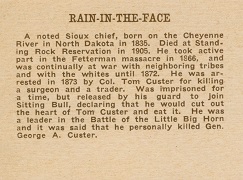
|
|||
|
|
|||
|
Above and below, the booklet Famous Indian Chiefs by Ben Ely featuring "17 portraits in color." A one-page profile of Rain in the Face on page 3 states that Rain "was reputed to have killed General Custer (though he denied it) and to have cut out the heart of Custer's brother Tom for revenge because Tom Custer had once arrested him." The other chiefs pictured are Sitting Bull, Crazy Horse, Gall, Crow Big-Foot, Tecumseh, King Philip, Black Hawk, Plenty Coups, Pontiac, Wolf Robe, Osceola, Red Cloud, Geronimo, Joseph, Petalesharo and American Horse. (Racine, WI: Whitman Publishing, 1935). |
|||
 |
|||
Tom was drawn as a character in the Lion and Champion comic strip series "Texas Jack and the Custer Clan," edition of October 22, 1966, published by Fleetway Publications (London). He is sketched riding with his brothers George and Boston on the Great Plains and spotting a large herd of buffalo. Tom spurs his horse to run headlong into the herd, saying "It's the leader of the herd I'm after! What a monster!" -- only to have the buffalo lunge and knock Tom "and his horse into a flying tangle of limbs! Tom lay right in the path of the oncoming herd ... General Custer knew that he could never get there in time to save his brother from a horrible death!" -- only to be pulled to safety at the last minute by "Texas Jack," the Seventh Cavalry's chief of scouts Col. Jonathan Morningstar. Tom was drawn as a character in the Lion and Champion comic strip series "Texas Jack and the Custer Clan," edition of October 22, 1966, published by Fleetway Publications (London). He is sketched riding with his brothers George and Boston on the Great Plains and spotting a large herd of buffalo. Tom spurs his horse to run headlong into the herd, saying "It's the leader of the herd I'm after! What a monster!" -- only to have the buffalo lunge and knock Tom "and his horse into a flying tangle of limbs! Tom lay right in the path of the oncoming herd ... General Custer knew that he could never get there in time to save his brother from a horrible death!" -- only to be pulled to safety at the last minute by "Texas Jack," the Seventh Cavalry's chief of scouts Col. Jonathan Morningstar.
Italian-language comic book, Magico Vento, with several pages devoted to a dressing-down Tom receives from a superior officer, with Tom muttering (English translation): "I'm taking off my uniform ... since you don't consider me worthy of wearing it." |
|||
|
~ Fiction: Little Big Man, The White
Buffalo and the Wild Bill Hickok Legend in Print and on Film ~ |
|||
|
In Little Big Man, Tom is mentioned on 16 pages. The fictional narrator Jack Crabb -- later portrayed on film by Dustin Hoffman -- says that he was "a carbon-copy of the General with the characteristics less authentic -- like he was more impudent than truly arrogant, with his hat on the side of his head, etc." Crabbe adds that while chasing Indians on the Plains, Tom and his brother Boston "was usually to be seen acting as if we was on a picnic outing." One character in the book says of Tom: There's another bastard. You seen that specimen? Wild Bill Hickok put a head on him once down in Kansas and Tom pulled in his horns. And old Rain in the Face, when he was arrested a couple years ago for murdering three white men, he blamed Tom Custer for it and swore he would one day cut out Tom's heart and eat it. Tom's been pissing his pants ever since that Indian escaped.
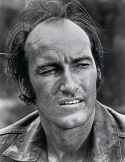
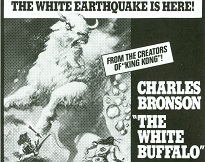
Above, actor Ed
Lauter, who portrayed Tom in a scene in the film version of
The White Buffalo (courtesy Metro Goldwyn Mayer). Above right, a poster from the United Artists film, starring Charles Bronson, Jack Warden and Kim Novak, presented by Dino
DeLaurentiis. The plot is a search by Wild Bill Hickok (right) and Crazy Horse to hunt and kill a massive albino bison. In a brief scene, Tom sits at a saloon drinking and becomes angry when learning that Hickok -- who allegedly had shot two of Tom's men years before in Hays City -- has returned to town. Hickok is acclaimed to have been the victor in 32 pistol duels and "the quickest and best pistol shot that ever lived." In Blaine Burkey's book Custer, Come at Once! The Fort Hays Years of George and Elizabeth Custer, 1867-1870, he writes of Tom's self-acknowledged alcoholism, vulgarity and profanity, and proclivity for playing "dirty tricks" (Hays, KS: Thomas More Prep, 1976). Tom's biographer Carl Day calls the "whole story" surrounding Hickok "a total fabrication." Educator and author J. Jefferson "Jeff" Broome, Ph.D., debunks the Hickok tales with precision in his deeply researched articles. The first was “Wild Bill Hickok’s 1870 Hays City Brawl With Custer’s Troopers,” Journal of the Wild West History Association, Volume IV, No. 6, Dec. 2011, and the most recent was “Wild Bill Hickok’s Hays City Brawl with Soldiers of Custer’s 7th Cavalry” (Little Big Horn Associates Research Review, Summer 2012). |
|||
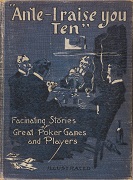
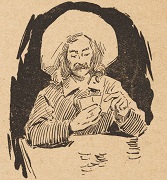
|
|||
|
A pen and ink sketch of a long-haired Tom is published in Ante - I Raise You Ten: Fascinating Stories of Great Poker Games and Players, by Eugene Edwards (Chicago: Jamieson-Higgins Co., 1902). It appears in a 17-page chapter entitled "Tom Custer's Luck." Edwards calls Tom "a dashing poker player. He played without any apparent style or reason, sometimes coming in on the most ridiculous hands -- such as a nine and ten, or standing a raise on three cards of a suit, in hope of catching two more to make a flush -- and made them win often enough to cause remark. He used to make the remark, half true, that he would a little rather start out with nothing in his hand, because then he had a better chance in the draw." (Images courtesy Huntington Library.) |
|||
| ~ Popular 20th Century Biographies of the General ~ | |||
|
The Little Big Horn Associates has produced a list of the "best" 35 books about the General and the Little Big Horn battle. Some already are analyzed elsewhere in this article; others produced after 1999 are outside the scope of this discussion; while several others that reached audiences outside of the immediate Custer community are outlined here:
|
|||
|
Son of the Morning Star - While pictured twice, and mentioned in a photo caption of Rain in the Face, Tom is not discussed until more than halfway through the narrative (page 236). The majority of text about Tom focuses on whether Rain cut out and ate Tom's heart. |
|||
| ~ Mid-to-Late 20th Century News Stories and Magazine Articles ~ | |||
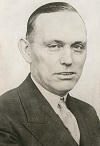 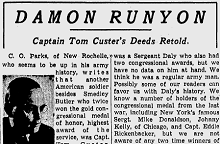
|
|||
|
Famed newspaperman and playwright Damon Runyon (left) wrote a nationally syndicated column commenting on a wide variety of Americana. On the eve of World War II, he penned "Captain Tom Custer's Deeds Retold." The piece said that Tom and Smedley Butler were the only two Americans to win medals of honor. Runyon recounted Tom's wound in battle, his feud with Rain in the Face and his death at Little Big Horn. Among other outlets, the column was printed in the Illinois State Journal in Springfield (On Sept. 29, 1941). |
|||
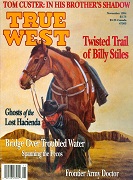
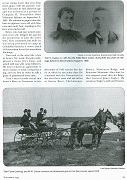
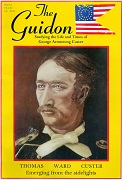
|
|||
|
Left: November 1994 edition of True West magazine, featuring "Tom Custer: In His Brother's Shadow, by Ernest Lisle Reedstrom, the first published article to acknowledge Thomas C. "Tommy" Custer as Tom's son, and Rebecca Minerd as the boy's mother. The article included a photo of Tommy found at Bowling Green State University. Right: October 1999 edition of The Guidon magazine, devoted to Tom and his story. |
|||
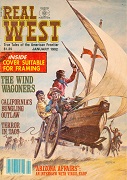
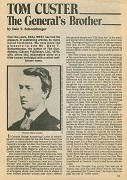
|
|||
|
Above: the January 1982 edition of Real West Magazine, with an article by Dale T. Schoenberger entitled "Tom Custer: The General's Brother." The piece said that Tom "was more than just the opposite of his more famous brother. He was an interesting Old West personality and an American military hero who has stood in his brother's shadow for too long." |
|||
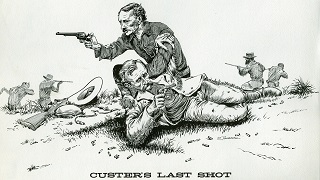 |
|||
|
Above: Ernest Lisle Reedstrom's sketch, "Custer's Last Shot," depicts Tom firing his pistol even as the general is falling with one's arm wrapped around the other. Many of Reedstrom's Custer sketches were published over the years by the Little Big Horn Associates, a national group devoted to understanding the life and times of the general and the battle.
|
|||

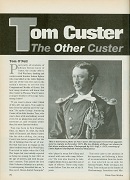

|
|||
|
"Tom Custer: The Other Custer," authored by Tom O'Neil and published in the Dixie Gun Works Blackpowder Annual 1997. O'Neil later reprinted the article with its own yellow cover. |
|||
| ~ Cameo Appearances in Films, Television and Radio ~ | |||
In the 1949 John Ford film She Wore a Yellow Ribbon, Tom is not a character but is mentioned in the script. The film stars John Wayne as Captain Nathan Cutting Brittles who, following the Bighorn battle, and just a few days away from retirement, leads a mission from Fort Starke to put down an imminent Cheyenne and Arapaho attack. Early in the film, Brittles sits at his desk and reads aloud a list of the casualties at Bighorn: "George Armstrong Custer. Tom Custer. Boston Custer. Calhoun. Cook. Crittenden. Harrington. Keough ... Myles Keough." The film won an Oscar for best cinematography. Argosy Pictures Corporation, released by RKO Radio Pictures. |
|||
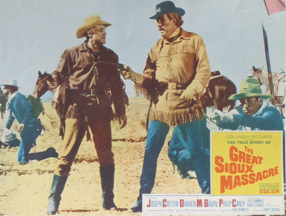
|
|||
|
Movie theatre lobby card for the 1965 film The Great Sioux Massacre, starring Joseph Cotten and Darren McGavin, in which Tom is portrayed by actor John Napier and General George A. Custer by Philip Carey. The film depicts the court martial trial against Major Reno for the slaughter at Little Big Horn, and how Reno refuted the charges by showing that Gen. Custer was at fault, blinded by his mad ambition that victory would sweep him into the White House. The character of Tom in this film is all but obscured. |
|||
|
In the 1991 film Son of the Morning Star, Tom is portrayed by actor Tim Ransom. Gary Cole had the role of Gen. Custer, and Rosanna Arquette as Libbie. The movie is based on the 1984 book by the same name, authored by Evan S. Connell. |
|||
 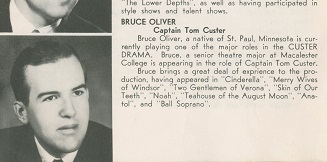
|
|||
|
Program booklet for The Custer Drama, written circa 1961 by Bert Pettey, presented by the Mandan Historical Development Association, Inc., and performed between 1959 and 1968 at the Custer Memorial Amphitheatre, Fort Lincoln State Park, Mandan, ND. Performances were held each July and August on Wednesdays through Sundays. Acts I and II took place in Sitting Bull's camp and in Fort Lincoln in 1873-1876, with Act II including scenes in the Bismarck Tribune office and in Washington, DC. Bruce Oliver, a native of St. Paul, MN, and a student at Macalester College, portrayed Tom. |
|||
 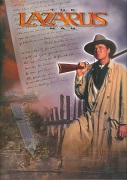 |
|||
|
Tom occasionally has been portrayed on television. One of the more prominent was in Castle Rock Entertainment’s 1996 The Lazarus Man, above, in an episode entitled "The Boy General," with Tim Ransom playing Tom and Jon David Weigand the General who conspire with Robert Urich’s Mr. Lazarus to put down mutiny attempts at Fort Hays. In this episode, Tom admits to a stranger that he is in love with Libbie and gives her longing glances during a dinner.
Other TV appearances include Son of the Morning Star miniseries (1992) where Tom appears throughout; The Court Martial of George Armstrong Custer (1976), an alternate history program which aired on Dec. 1, 1977 on the Hallmark Hall of Fame program, produced by Norman Rosemont and directed by Glenn Jordan based on the novel by Douglas C. Jones, with some discussion of Tom; and Time Tunnel (Season 1, Episode 8, airing on Oct. 28, 1966) with an episode entitled "Massacre" with Tom portrayed by Bruce Mars, directed by Murray Golden, produced by Irwin Allen and written by Carey Wilber. |
|||
|
In the ephemeral realm of radio, Tom was a character in the the Colonial Radio Theatre broadcast, Little Big Horn, by Jerry Robbins. He also was a main character in Durant Heroes of the West, with scripts preserved in the John Carroll Collection in Bryan, TX. |
|||
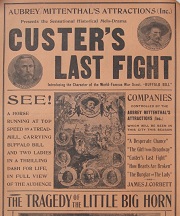
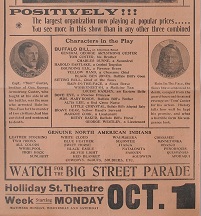
|
|||
|
Above: rare 1903 broadside featuring Tom's photo, advertising the nationally touring stage play, Custer's Last Fight, written by James Halbert "Hal" Reid and produced by Aubrey Mittenthal Attractions. Tom's portrait appears in the snippet at right opposite his nemesis Rain in the Face, although he is not portrayed in the play. The ultra-rare script is preserved today in the Library of Congress. Other stage shows in which Tom is a character include R. Kram's play, Court Martial of Capt. Thomas W. Custer: A Ghost Story of the Little Bighorn. |
|||
| ~ Two Full Length Biographies ~ | |||
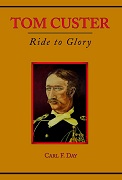
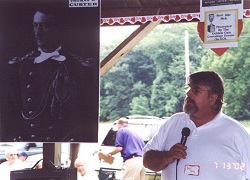
|
|||
|
Carl Day's 301-page biography, Tom Custer: Ride to Glory (Arthur Clark & Co., 2003). Right: Carl speaking at the 2002 Minerd-Minard-Miner-Minor Reunion in southwestern Pennsylvania. |
|||
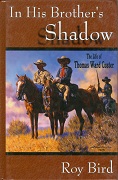
|
|||
Tom Bird's 200-page biography, In His Brother's Shadow: The Life of Thomas Ward Custer (Turner Publishing Company, 2002). Later reissued under the title, The Better Brother: Tom & George Custer and the Battle for the American West. |
|||
~ Unfortunate Misses in
Pop Culture~ |
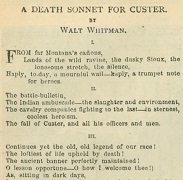 On Aug. 5, 1876, a little more than a month after Little Big Horn, famed American poet Walt Whitman penned "A Death Sonnet for Custer," printed in Frank Leslie's Illustrated newspaper. Only the general is mentioned in the poem, and none of the other Custers, and is described in the most glowing phrasings. In part IV, Whitman writes: "Thou of the sunny, flowing hair, in battle, I erewhile saw, with erect head, pressing ever in front, bearing a bright sword in thy hand, Now ending well the splendid fever of thy deeds, ... There in the far Northwest, in struggle, charge and sabre- smite, Desperate and glorious -- ay, in defeat most desperate, most glorious, After thy many battles, in which, never yielding up a gun or a color, Leaving behind thee a memory sweet to soldiers, Thou yieldest up thyself." On Aug. 5, 1876, a little more than a month after Little Big Horn, famed American poet Walt Whitman penned "A Death Sonnet for Custer," printed in Frank Leslie's Illustrated newspaper. Only the general is mentioned in the poem, and none of the other Custers, and is described in the most glowing phrasings. In part IV, Whitman writes: "Thou of the sunny, flowing hair, in battle, I erewhile saw, with erect head, pressing ever in front, bearing a bright sword in thy hand, Now ending well the splendid fever of thy deeds, ... There in the far Northwest, in struggle, charge and sabre- smite, Desperate and glorious -- ay, in defeat most desperate, most glorious, After thy many battles, in which, never yielding up a gun or a color, Leaving behind thee a memory sweet to soldiers, Thou yieldest up thyself." |
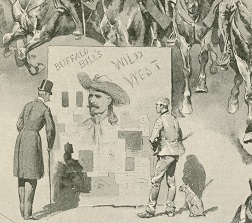 Buffalo Bill's Wild West Show was a deeply engrained part of American popular culture for three decades from 1883 to 1913. It featured a regular segment on "Custer's Last Fight," a free- for- all battle re-enactment. However exciting, additional human interest drama could have been added to the performance by showing the demise of each of the five Custer family members, one ... by ... one ... including Tom. But this was not to be, either overlooked or ignored in the scripting, and the viewing public missed the opportunity to understand the tragedy at deeply personal levels of family suffering. Buffalo Bill's Wild West Show was a deeply engrained part of American popular culture for three decades from 1883 to 1913. It featured a regular segment on "Custer's Last Fight," a free- for- all battle re-enactment. However exciting, additional human interest drama could have been added to the performance by showing the demise of each of the five Custer family members, one ... by ... one ... including Tom. But this was not to be, either overlooked or ignored in the scripting, and the viewing public missed the opportunity to understand the tragedy at deeply personal levels of family suffering. |
Frederic Remington's depiction of the Little Big Horn battle was published in Harper's Weekly on Jan. 10, 1891, some 14½ years after the battle. Without naming names, the accompanying article dramatically reads: Its immediate story is vividly told to the eye, and the imagination supplies the sequel. The remnant of a body of United States troops, surrounded by an overwhelming force of hostiles, has been driven from point to point until all that remains for officers and men is to sell their lives as dearly as possibly on the little hillock where they are brought to bay. The dead and dying, the acts of aiming and firing, show that the final moments are at hand, the enemy coming in from all sides. There is no sign of quailing in this party of doomed men; stalwart, stout-hearted, keen-eyed, these bronzed veterans will make the red warriors pay the full price for their victory. The last survivors will perhaps have a spare cartridge left, with which to save themselves from capture by a merciless foe. |
Many other paintings and drawings of the Little Big Horn battle also centrally have featured the general at the exclusion of his kinsmen. The most famous is Anheuser Busch Co.'s 1896 "Custer's Last Fight" lithograph by Cassilly Adams, of which one million prints are estimated to have been made and distributed. Others include "Custer's Last Stand" by Edgar Samuel Paxson, now on display at the Buffalo Bill Center of the West; "Custer's Last Fight" by A.R. Ward and E. Cooper in the 1894 book Great Men and Famous Women: A Series of Pen and Pencil Sketches, edited by Charles F. Horne; "Custer's Last Hope" by J.K. Ralston; and the "Custer's Last Battle" diorama painting at the Custer Battlefield Museum in Montana. |
Perhaps the most famous Custer film of all in which Tom was absent is They Died with Their Boots On, directed by Raoul Walsh, produced by Hal B. Wallis and Robert Fellows, and distributed by Warner Bros. It starred Errol Flynn as the general and Olivia de Havilland as Libbie.
|
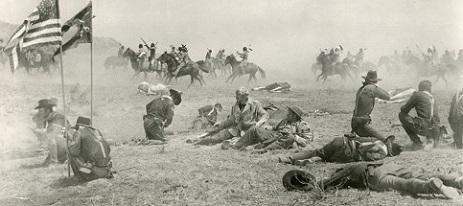 |
Scene from the 1958 Walt Disney Productions film Tonka, directed by Lewis R. Foster, with Sal Mineo playing a Sioux warrior and Britt Lomond the General, but with Tom not depicted. |
Rain-in-the-face, Rain-in-the-face, |
| Copyright © 2001-2021 Mark A. Miner |
Minerd.com extends profound thanks to Fr. Vincent Heier for his many and important contributions to this research, and also to the generosity of J. Jefferson Broome and the late Joan Croy for so graciously sharing their knowledge. Reproduction without consent is prohibited. |

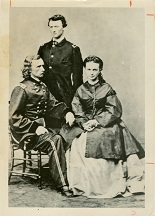


 A chapter about Tom,
written by Libbie Custer and entitled "A Beau Sabreur" in
The Bravest Five Hundred of '61: Their Noble Deeds Described By Themselves, Together With an Account of Some Gallant Exploits of Our Soldiers in Indian Warfare. How the Medal of Honor Was Won – compiled by Theodore F. Rodenbough. (New York: G.W. Dillingham, successor to G.W. Carleton & Co., 1891). Below: Pen and ink
drawing from the book, based on a tintype photograph, showing Union soldiers displaying Confederate colors captured at Sailor's Creek on April 6, 1865, one of the two battles in which Tom earned a Medal of Honor.
A chapter about Tom,
written by Libbie Custer and entitled "A Beau Sabreur" in
The Bravest Five Hundred of '61: Their Noble Deeds Described By Themselves, Together With an Account of Some Gallant Exploits of Our Soldiers in Indian Warfare. How the Medal of Honor Was Won – compiled by Theodore F. Rodenbough. (New York: G.W. Dillingham, successor to G.W. Carleton & Co., 1891). Below: Pen and ink
drawing from the book, based on a tintype photograph, showing Union soldiers displaying Confederate colors captured at Sailor's Creek on April 6, 1865, one of the two battles in which Tom earned a Medal of Honor.
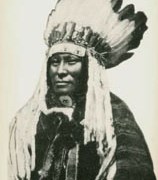 Chief Rain in the Face, of the Hunkpapa component of the Lakota tribe, attracted Tom's enmity in August 1873.
That month, led by Rain, the Hunkpapas attacked a Northern Pacific Railroad survey crew near the Tongue River in Montana. General Custer learned
that the chief was the perpetrator and, after the incident, was staying at Standing Rock in the
Dakotas. The general dispatched Tom in 1874 to make the arrest. Tom
apprehended Rain in a trading store at Fort Yates and brought the captive to Fort Abraham Lincoln.
Richard O'Connor's book Wild Bill Hickok (Garden City, NY:
Doubleday, 1959), states that "Tom had his henchman hold him down
while Tom beat and kicked in the Indian." Under a sentence of death by hanging, the chief escaped and vowed revenge, boasting that he would cut Tom's heart
out and eat it raw.
Chief Rain in the Face, of the Hunkpapa component of the Lakota tribe, attracted Tom's enmity in August 1873.
That month, led by Rain, the Hunkpapas attacked a Northern Pacific Railroad survey crew near the Tongue River in Montana. General Custer learned
that the chief was the perpetrator and, after the incident, was staying at Standing Rock in the
Dakotas. The general dispatched Tom in 1874 to make the arrest. Tom
apprehended Rain in a trading store at Fort Yates and brought the captive to Fort Abraham Lincoln.
Richard O'Connor's book Wild Bill Hickok (Garden City, NY:
Doubleday, 1959), states that "Tom had his henchman hold him down
while Tom beat and kicked in the Indian." Under a sentence of death by hanging, the chief escaped and vowed revenge, boasting that he would cut Tom's heart
out and eat it raw.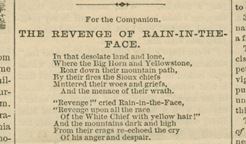
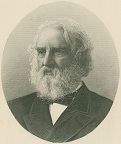

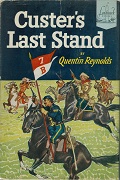
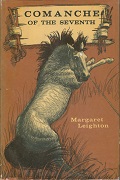 Right: Comanche of the Seventh, by Margaret Carver Leighton (New York, Ariel Books, 1957). The book tracks the life saga of a horse born on the plains in the spring of 1862 which later was captured for use by the United States Army and became part of the Seventh Cavalry, ridden by Capt. Myles Keough and the only survivor of the Bighorn battle. Mentioned on 28 pages of the work, Tom is first named in a scene at Fort Leavenworth in April 1868 as he prepares to send the freshly purchased horses further west: "A lean, fair-haired young officer supervised the loading. As the train began to move out towards the setting sun he grinned and waved his hat at a railroad official on the station platform."
Right: Comanche of the Seventh, by Margaret Carver Leighton (New York, Ariel Books, 1957). The book tracks the life saga of a horse born on the plains in the spring of 1862 which later was captured for use by the United States Army and became part of the Seventh Cavalry, ridden by Capt. Myles Keough and the only survivor of the Bighorn battle. Mentioned on 28 pages of the work, Tom is first named in a scene at Fort Leavenworth in April 1868 as he prepares to send the freshly purchased horses further west: "A lean, fair-haired young officer supervised the loading. As the train began to move out towards the setting sun he grinned and waved his hat at a railroad official on the station platform."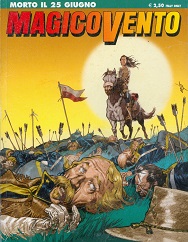
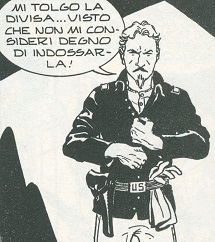
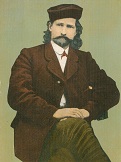 Tom's
exaggerated scrapes with gunfighter Wild Bill Hickok in Hays, Kansas have entered
American myth in a variety of stories, books and on film. Among the major published works of fiction made into major motion pictures
were Little Big Man by Thomas Berger (New York, Dial Press, 1964; and Greenwich, CT: Fawcett Crest Books, 1964) and
The White Buffalo by Richard Sale (New York: Bantam Books, 1977).
Tom's
exaggerated scrapes with gunfighter Wild Bill Hickok in Hays, Kansas have entered
American myth in a variety of stories, books and on film. Among the major published works of fiction made into major motion pictures
were Little Big Man by Thomas Berger (New York, Dial Press, 1964; and Greenwich, CT: Fawcett Crest Books, 1964) and
The White Buffalo by Richard Sale (New York: Bantam Books, 1977). The seeds of the brawl legend were planted in an 1867
Harper’s article by [?] Nicholl which told the story of when
the lives of Tom and Wild Bill intersected in Hays, KS. At the time, Wild Bill
was serving as a local sheriff. Eugene Cunningham's book,
Triggernometry: A Gallery of Gunfighters (Caxton, 1941),
describes the feud in a paragraph which does not name Tom other than
"Custer" and "General Custer's brother." Cunningham
writes that Tom "felt that his position in the Army rendered him
immune to authority other than that of the military, but when he rode
drunkenly up and down the streets shooting up the town, Hickok took him
quietly into custody. The incident rankled with Custer." Tom is
alleged to have retaliated by recruiting a handful of toughs within the
7th Cavalry and trying to ambush Hickok in a Hays saloon on New Year's
Eve, with Hickok killing three of the soldiers. Cooler heads broke up
the fight and "drove them out of town."
The seeds of the brawl legend were planted in an 1867
Harper’s article by [?] Nicholl which told the story of when
the lives of Tom and Wild Bill intersected in Hays, KS. At the time, Wild Bill
was serving as a local sheriff. Eugene Cunningham's book,
Triggernometry: A Gallery of Gunfighters (Caxton, 1941),
describes the feud in a paragraph which does not name Tom other than
"Custer" and "General Custer's brother." Cunningham
writes that Tom "felt that his position in the Army rendered him
immune to authority other than that of the military, but when he rode
drunkenly up and down the streets shooting up the town, Hickok took him
quietly into custody. The incident rankled with Custer." Tom is
alleged to have retaliated by recruiting a handful of toughs within the
7th Cavalry and trying to ambush Hickok in a Hays saloon on New Year's
Eve, with Hickok killing three of the soldiers. Cooler heads broke up
the fight and "drove them out of town."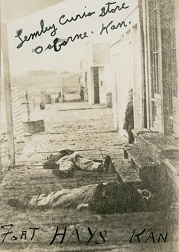
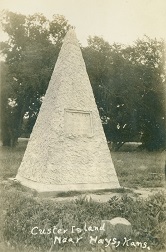
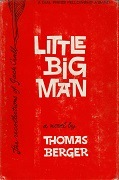 O'Connor's
Wild Bill Hickok calls Tom "a violent drunkard" and
says he enjoyed shooting windows and lights when carousing through Hays.
It also tells the apocryphal story that Tom once brought his horse into a
Hays pool hall and shot the animal when it failed to jump up onto a billiard
table. The source of this tale appears to be research notes by William
Connelley for his 1933 book
They Called Him Wild Bill (today found in the Denver Public Library).
O'Connor's
Wild Bill Hickok calls Tom "a violent drunkard" and
says he enjoyed shooting windows and lights when carousing through Hays.
It also tells the apocryphal story that Tom once brought his horse into a
Hays pool hall and shot the animal when it failed to jump up onto a billiard
table. The source of this tale appears to be research notes by William
Connelley for his 1933 book
They Called Him Wild Bill (today found in the Denver Public Library).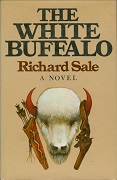 In
The White Buffalo, Tom is named on three pages of the book, not as an active participant, but in the third person. The primary reference is in a conversation between James Otis (alias of Wild Bill Hickok) and Charlie Zane, a one-eyed seller of cats who meet in a saloon in Fetterman, Kansas. They eventually talk about a New Year's Eve dispute when Hickok arrested Tom for drunk and disorderly conduct, and Tom later returned with a few men to give Hickok a beating. "Tom Custer tried to murder me," Hickok says. Zane replies, "I always knew you and Tom got along like a pair of scratch cats. He was green-eyed about you 'cause the General thought you was Jesus in buckskins." Hickok goes on to call Tom "always hothead, always sotted. One night he breezed into Hays [Kansas], shooting out the windows, and I had to buffalo him like a common lush."
In
The White Buffalo, Tom is named on three pages of the book, not as an active participant, but in the third person. The primary reference is in a conversation between James Otis (alias of Wild Bill Hickok) and Charlie Zane, a one-eyed seller of cats who meet in a saloon in Fetterman, Kansas. They eventually talk about a New Year's Eve dispute when Hickok arrested Tom for drunk and disorderly conduct, and Tom later returned with a few men to give Hickok a beating. "Tom Custer tried to murder me," Hickok says. Zane replies, "I always knew you and Tom got along like a pair of scratch cats. He was green-eyed about you 'cause the General thought you was Jesus in buckskins." Hickok goes on to call Tom "always hothead, always sotted. One night he breezed into Hays [Kansas], shooting out the windows, and I had to buffalo him like a common lush."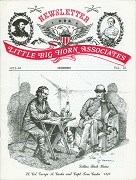 Left: Another Reedstrom sketch, the 1975 "Letters Back Home," depicting Tom and the general in theri tent, published by the LBHA, a leading force in preserving Tom's legacy in print over the years
-- in its Newsletter, its
Research Review magazine and as topics of annual and regional conferences. Among its
Newsletter feature articles are: "Custer Family," Vol. V, No. 1, Spring 1971; "Letters Back Home" (cover illustration by Lisle
Reedstrom), Vol. IX, No. 12, 1975; "Tom Custer's Medals of Honor," Vol. X, No. 1, Jan. 1976; "Tom Custer and the Wadsworth Girls," Vol. XIV, No. 12, 1980; and "The Custer Family," Vol. 6, No. 2, June 1992.
Left: Another Reedstrom sketch, the 1975 "Letters Back Home," depicting Tom and the general in theri tent, published by the LBHA, a leading force in preserving Tom's legacy in print over the years
-- in its Newsletter, its
Research Review magazine and as topics of annual and regional conferences. Among its
Newsletter feature articles are: "Custer Family," Vol. V, No. 1, Spring 1971; "Letters Back Home" (cover illustration by Lisle
Reedstrom), Vol. IX, No. 12, 1975; "Tom Custer's Medals of Honor," Vol. X, No. 1, Jan. 1976; "Tom Custer and the Wadsworth Girls," Vol. XIV, No. 12, 1980; and "The Custer Family," Vol. 6, No. 2, June 1992.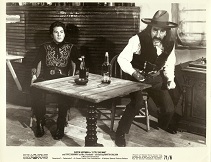 Tom's character did not survive the editing process from book to major motion picture for Little Big Man (1971) with Richard Mulligan as the general, directed by Arthur Penn. Here, with Dustin Hoffman as Jack Crabb (left) and Jeff Corey as Wild Bill Hickok, in a scene which the book uses for a conversation about Hickok's earlier dust-up with Tom.
Tom's character did not survive the editing process from book to major motion picture for Little Big Man (1971) with Richard Mulligan as the general, directed by Arthur Penn. Here, with Dustin Hoffman as Jack Crabb (left) and Jeff Corey as Wild Bill Hickok, in a scene which the book uses for a conversation about Hickok's earlier dust-up with Tom.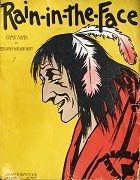 In the rarified genre of popular music, Tom is noticeably absent, even when some of his antagonists received high profile treatment, such as this Rain in the Face sheet music from 1907 (Jerome R. Remick & Co., New York and
Detroit). The song's chorus says:
In the rarified genre of popular music, Tom is noticeably absent, even when some of his antagonists received high profile treatment, such as this Rain in the Face sheet music from 1907 (Jerome R. Remick & Co., New York and
Detroit). The song's chorus says: